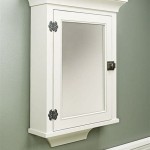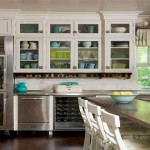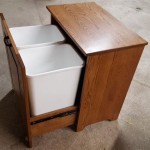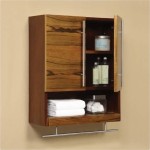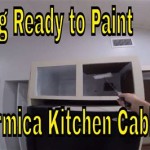How Do You Adjust Self Closing Kitchen Cabinet Doors?
Self-closing kitchen cabinet doors are a popular design choice for their convenience and sleek aesthetics. They add a touch of luxury to the kitchen and ensure doors close seamlessly without manual intervention. However, over time, these doors can become misaligned, causing them to slam shut or struggle to close completely. Fortunately, adjusting self-closing kitchen cabinet doors is a relatively straightforward process that homeowners can often tackle themselves. This article offers a comprehensive guide on how to adjust these doors, enabling you to restore their proper operation and maintain their elegant appeal.
Understanding the Mechanism
Self-closing cabinet doors utilize a sophisticated mechanism involving hinges and a spring-loaded damper. The hinges provide the pivot point for the door, while the damper controls the closing speed. The damper is typically housed within the hinge or attached to the door itself. It creates resistance as the door closes, preventing it from slamming shut and ensuring a smooth and quiet closure. The damper's tension can usually be adjusted, allowing you to fine-tune the closing speed.
Misalignment can occur for several reasons: *
Loose screws:
Over time, the screws securing the hinges to the cabinet and the door can loosen, causing the door to shift out of alignment. *Worn-out hinges:
Continuous use can wear down the hinge mechanism, leading to sagging doors and misalignment. *Uneven cabinet construction:
In some cases, the cabinet itself may be uneven, resulting in doors that don't close properly. *Foreign objects:
Debris or foreign objects trapped within the hinge mechanism can interfere with proper operation.Adjusting the Hinges
The most common adjustment needed for self-closing doors involves the hinges. Here are the steps for adjusting the hinges: 1.
Identify the hinge type:
Self-closing hinges typically come in two primary types: European-style hinges and concealed hinges. European hinges have exposed screws for adjustment, while concealed hinges have internal adjustment mechanisms. 2.Locate the adjustment screws:
European hinges often have two to three adjustment screws on the hinge plate. The screws are typically labeled with arrows indicating directions for adjustment. The top screw adjusts the horizontal position, the bottom screw adjusts the vertical position, and the side screw (if present) adjusts the door's depth. 3.Adjust the screws:
Use a small screwdriver to carefully turn the screws. Turning the screw clockwise will tighten it, while turning it counterclockwise will loosen it. Experiment with small adjustments until the door closes smoothly and aligns correctly. 4.Check for proper closure:
After adjusting the screws, open and close the door several times to ensure it closes smoothly without slamming shut.Adjusting the Damper
If the hinge adjustments don't resolve the closing issues, the damper mechanism may need adjusting. Here are the steps for adjusting the damper: 1.
Locate the damper:
The damper is typically located within the hinge or attached to the door itself. It might have a small adjustment screw or knob. 2.Adjust the tension:
Turn the adjustment screw or knob to adjust the damper's tension. Turning the screw clockwise will increase the tension, slowing down the closing speed. Turning the screw counterclockwise will decrease the tension, making the door close faster. 3.Test the closing speed:
After adjusting the damper, test the closing speed by opening and closing the door several times to ensure it closes smoothly and without slamming.Additional Tips
Here are a few additional tips for adjusting self-closing cabinet doors: *
Remove any obstructions:
Before adjusting the hinges or damper, ensure there are no obstructions preventing the door from closing properly. This includes items inside the cabinet or debris stuck in the hinge mechanism. *Use a level:
When making adjustments, use a level to ensure the door is perfectly aligned both vertically and horizontally. *Check for worn-out parts:
If the screws are extremely loose or the hinges appear worn out, consider replacing them with new parts. *Consult a professional:
If you are unable to resolve the issues with the self-closing cabinet doors, consult a professional cabinetmaker or repairperson for assistance.
Tec Soft Close Adjustment

How To Adjust Self Closing Kitchen Cabinet Hinges Maintenance

How To Adjust Soft Close Hinges 7 Steps With Pictures Wikihow

How To Adjust 3 Hinges Align Cabinet Doors

Tec Soft Close Adjustment

How Do I Retrofit Cabinets With Soft Close Hardware Wood

Cabinets 101 How To Adjust Self Closing Kitchen Cabinet Hinges

How To Adjust Soft Close Hinges 7 Steps With Pictures Wikihow

Soft Close Hinge Adjustment Overclockers Forums

How To Adjust Cabinet Hinges Bob Vila
Related Posts



